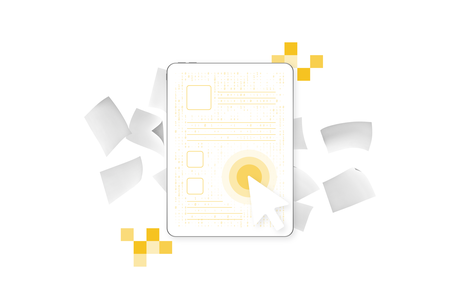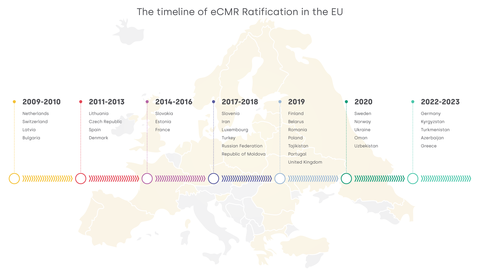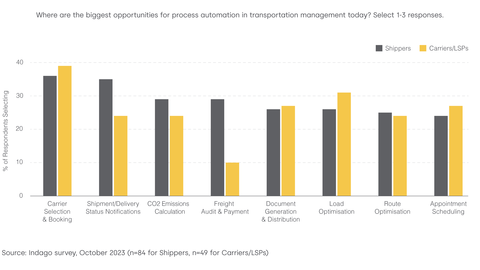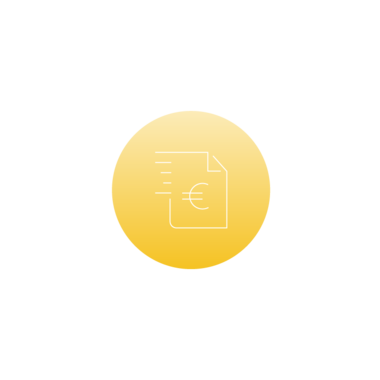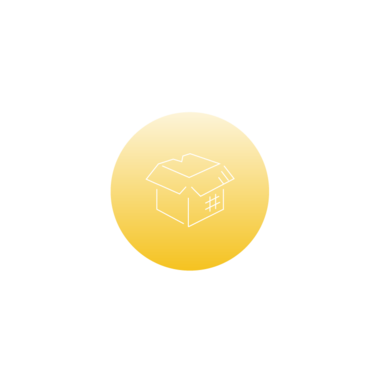10 Questions on eCMR and Digital Transport documents answered
Gerry Daalhuisen, Dock Scheduling and Yard Management Tribe Lead at Transporeon, answered the most burning questions submitted by our customers about digital transport documents and their impact on the logistics industry in our popular 10 Questions on… series.
Read on to discover how digital documents save up to 75% of time typically spent per document, and learn the best practices for implementing digital documents based on the experience of Transporeon customers. Or, you can watch the video here.
Adrian Gonzalez (AG): What is a digital transport document, and how is it different from a paper document?
Gerry Daalhuisen (GD): It’s a common misconception that digital documents are simply PDF versions of print documents. A true digital transport document offers a lot more than that.
Digital transport documents enable all parties in the supply chain to access and collaborate on the electronic version of the document in real time so that they can share and enrich information in the document at each step throughout the process and have a single overview for all the parties involved. The output can be saved as a PDF file, but the real advantage is collaborating on the same piece of information, enriching the information available to all parties in each step, and using it to your advantage in the process.
AG: What types of digital documents do you offer today?
GD: At Transporeon, we have recently launched a product called Digital Transport Documents. It’s a module that can be used as a container to work with all kinds of logistics documents in a digital form. The first document we’ve delivered since April is eCMR, the electronic consignment note. e-CMR replaces the paper consignment note that has been used in Europe since 1956.
The e-delivery note will be added next, and we’re also looking into a cleaning certificate—a typical document in the chemical industry—as well as some customs and tax documents.
AG: Are digital document solutions universally recognised and accepted in different countries and regions?
GD: It depends on the type of document and the domestic regulations in each country. We initially started with eCMR because it follows a ratification process recognised by all the countries currently using the paper CMR. From 2026, all the countries in the European Union will be accepting the eCMR. Right now in Europe, almost every country has ratified eCMR, and the remaining countries are expected to ratify by 2026. And that provides a good background to get started. Acceptance is coming, and that means that the infrastructure is being built up. Then, adoption comes into play.
AG: Is sign-on-glass considered an authorised digital signature?
GD: The European Commission advises following their regulation that states that a digital signature must be logically linked to the person who signs the document. With sign-on-glass, that information is not available, but there are solutions for this, such as using a username and password to identify the person who has signed the document, or using a QR code with a two-factor PIN code sent to a mobile device to identify people securely using multi-factor authentication. Telematics inside the driver’s cabin or data from self-service kiosks at the yard entrance can also be used for this purpose.
AG: What are the primary benefits of implementing a digital document solution for businesses and the logistics industry?
GD: Surveys have shown that with a document like CMR, the average time spent on creating the document is 20 minutes. When you move to a digital version of it, you can save 15 minutes. So, 75% of the time that you would normally spend on a paper document can be saved and used elsewhere. Beyond that, there are a lot of indirect advantages. Since both the carrier and the shipper have access to the same data in real time, this can increase real-time visibility enormously. The moment the recipient has signed for the goods, the shipper and the carrier know that they have arrived. And if the goods are well-received, the carrier can directly submit the transport invoice. So invoicing is sped up, which is even more important to a carrier than saving time. In the case of shortages or damages, the shipper can directly take action to resend the goods that were damaged and start the dispute process in real time.
‘With a document like CMR, the average time spent on creating the document is 20 minutes. When you move to a digital version of it, you can save 15 minutes. So, 75% of the time that you would normally spend on a paper document can be saved and used elsewhere.’
